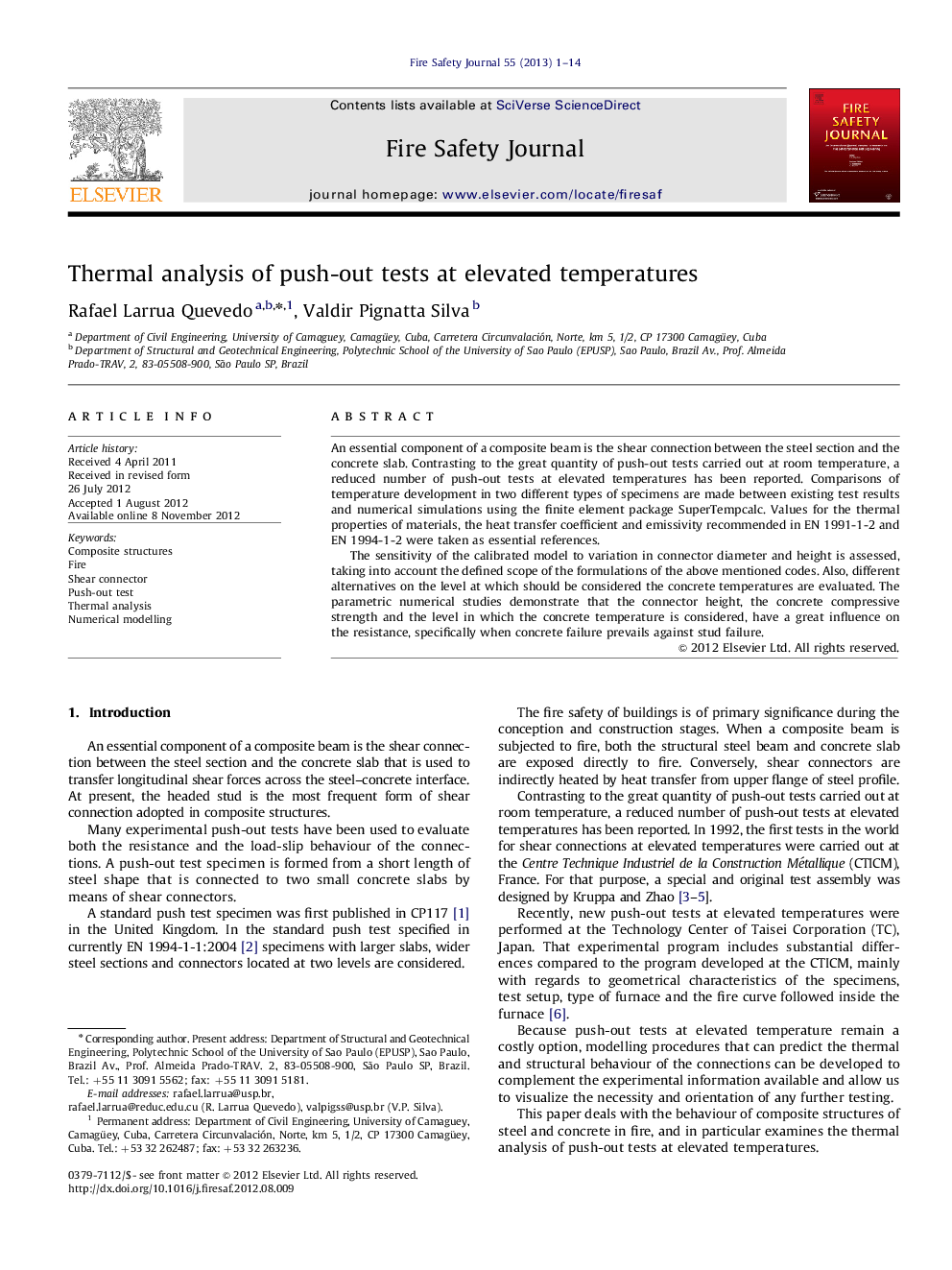| Article ID | Journal | Published Year | Pages | File Type |
|---|---|---|---|---|
| 270078 | Fire Safety Journal | 2013 | 14 Pages |
An essential component of a composite beam is the shear connection between the steel section and the concrete slab. Contrasting to the great quantity of push-out tests carried out at room temperature, a reduced number of push-out tests at elevated temperatures has been reported. Comparisons of temperature development in two different types of specimens are made between existing test results and numerical simulations using the finite element package SuperTempcalc. Values for the thermal properties of materials, the heat transfer coefficient and emissivity recommended in EN 1991-1-2 and EN 1994-1-2 were taken as essential references.The sensitivity of the calibrated model to variation in connector diameter and height is assessed, taking into account the defined scope of the formulations of the above mentioned codes. Also, different alternatives on the level at which should be considered the concrete temperatures are evaluated. The parametric numerical studies demonstrate that the connector height, the concrete compressive strength and the level in which the concrete temperature is considered, have a great influence on the resistance, specifically when concrete failure prevails against stud failure.
► We examine the thermal analysis of push out tests at elevated temperatures. ► We analyse different alternatives for determination of the concrete temperatures. ► Connector height and concrete strength have great impact on the connector resistance.
